Name That Plant, WIN That Plant VIII
Can you identify this plant? Here’s a close up of one of the petals.
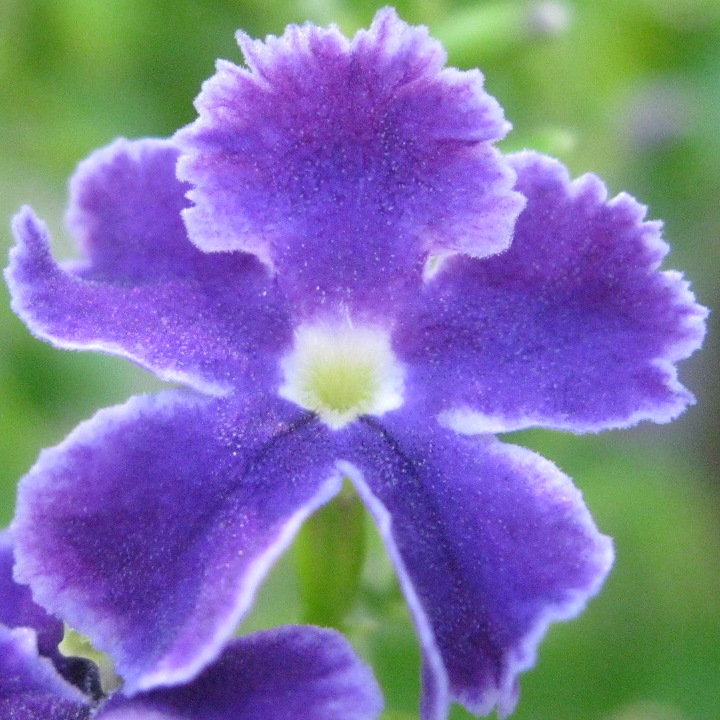
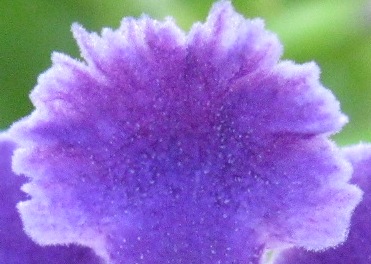
Contest Rules: Leave a comment on Facebook or the Garden Blog with your answer. The person with the first correct answer may choose to receive the mystery plant (if available) or a peace lily. The winner will be announced on the Estates Garden Blog and on Facebook. Plants must be picked up from the Edison and Ford Winter Estates within 7 days of contest end (and, no, we can’t ship them!). Previous winners are not eligible.
Name That Plant VII ANSWER: Angel's Trumpet
Congratulations to Megan Kissinger for guessing correctly, a mere 5 minutes after the contest began!
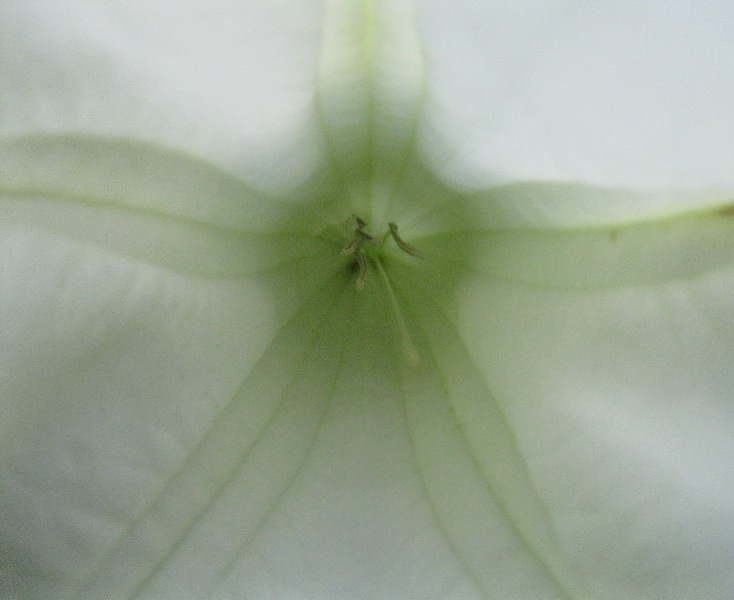

Angel’s Trumpet, Brugmansia spp.
The large pendulous flowers of this large shrub will surely attract attention in your Florida yard. Growing to a height of 15 feet, angel’s trumpet makes a great accent plant for homes within zones 10-11 and have been reported to survive in zones 8B-9B. As natives of South America, they require regular watering and do best in full sun or light shade. There are several species of Brugmansia and many hybrids have been developed, each with a different color including white, peach and yellow. Blooms are at their largest at night and tend to “perk up” a bit as the sun goes down.

In a 1931 survey of the Estates, Angel’s trumpet was noted in the gardens. However, the flower color wasn’t recorded so we don’t know which species of Brugmansia the Edisons enjoyed. Today, white and peach varieties are on the grounds near the Edison Caretaker’s House. The Estates Garden Shoppe has a few angel’s trumpets for sale if you wish to plant them in your garden. Please note that all parts of the plant are toxic if ingested and some people do have skin reactions to the plant material.
Summer Blooms: Ylang Ylang, Bangar Nut, African Pin Cushion
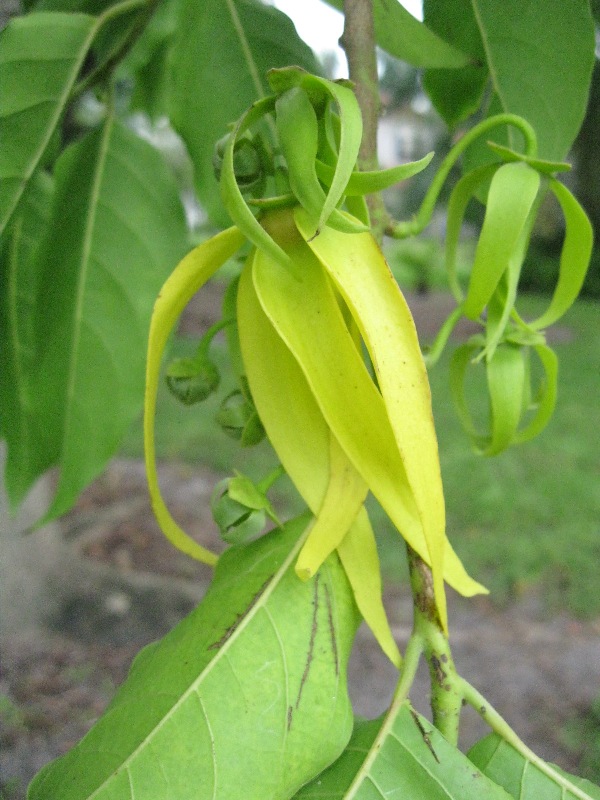
The ylang ylang tree at the Edison and Ford Winter Estates has finally started blooming! The oils of this flower are used to make perfumes such as Chanel No. 5, so you can imagine how fragrant it is. The tree is close to the fence along McGregor Boulevard in front of the Edison guest house. There are just a few ylang ylang trees available for purchase in the Estates Garden Shoppe.
The Estates is seeing encore performances from the bangar nut tree (Sterculia foetida) and African pin cushion (Sarcocephalus latifolius) this summer. Both bloomed in May and are blooming again right now. The bangar nut is known for its mothball-scented flower and the pin cushion has a unique flower that is sweetly scented. The bangar nut tree is in the Estates research gardens behind the Banyan Café and the pin cushion is next to the public butterfly garden behind the ticket office.
Name That Plant VII, WIN THAT PLANT
The first person to correctly identify this plant will WIN IT! We will announce the winner and the correct answer next Wednesday!
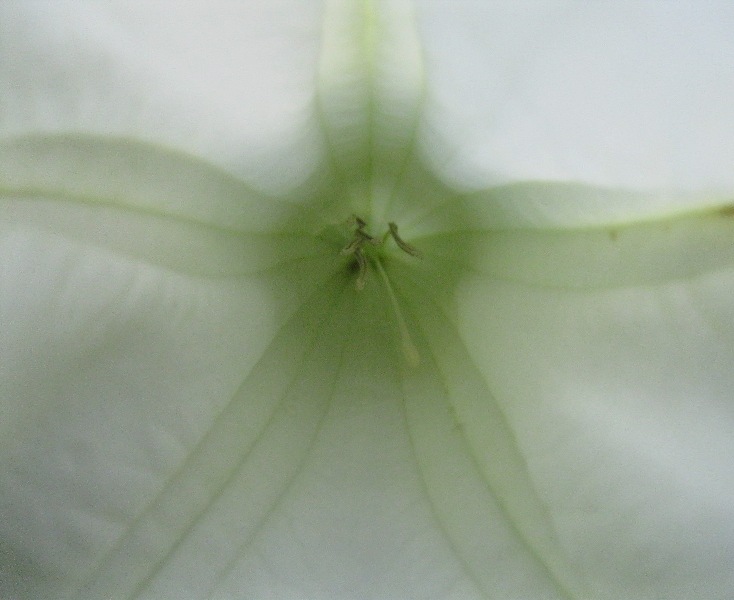
Contest Rules: Leave a comment on Facebook or the Garden Blog with your answer. The person with the first correct answer may choose to receive the mystery plant (if available) or a peace lily. The winner will be announced on the Estates Garden Blog and on Facebook. Plants must be picked up from the Edison and Ford Winter Estates within 7 days of contest end (and, no, we can’t ship them!).
Name That Plant VI ANSWER: Shell Ginger
Congratulations to Patricia Travis for winning this week’s Name That Plant!
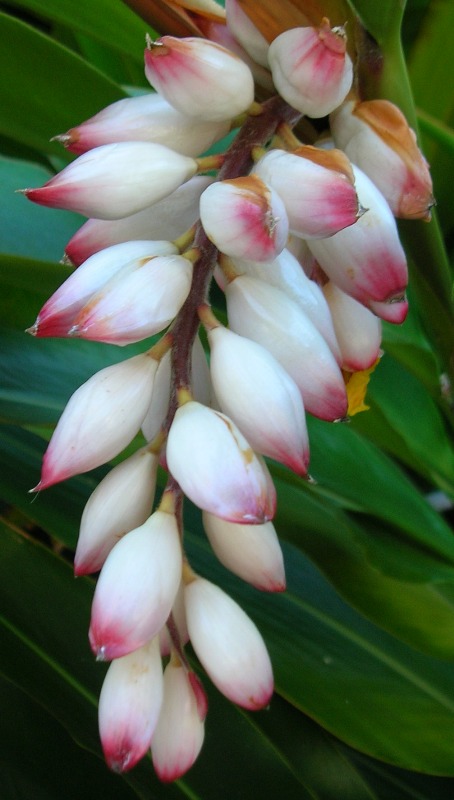
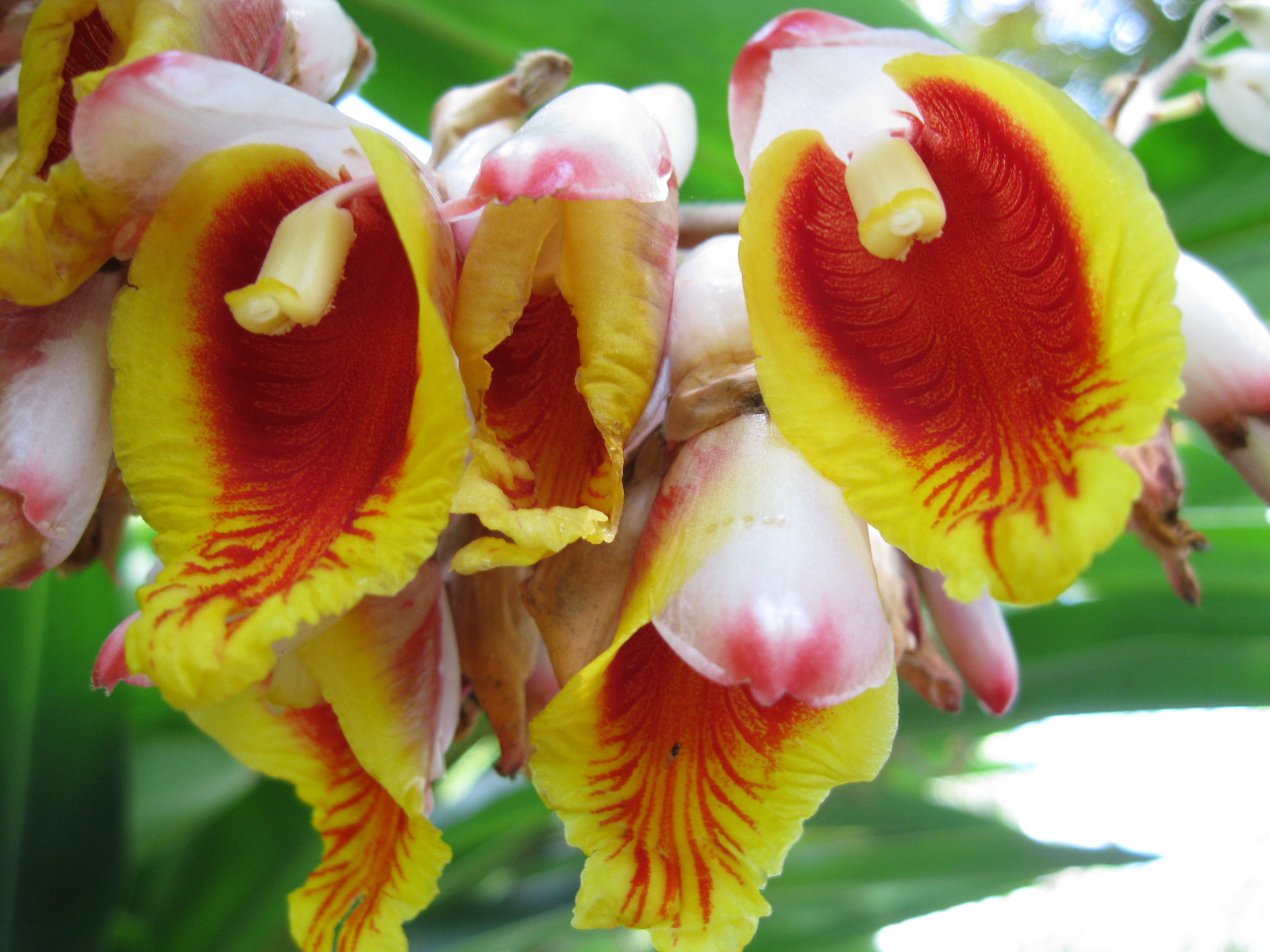
Shell ginger, Alpinia zerumbet
A tall landscape plant, shell ginger (or one of the many other gingers available), provide striking background foliage in the landscape. It may grow up to six feet tall and will continue to spread if given adequate space. It is rated for zones 8-11 but may not flower if affected by frost. However, our shell ginger is flowering nicely this year after more than a week of freezing temperatures in January. Part shade and moist soils are best for this plant. Although it will tolerate full sun, it is not drought tolerant and may require even more water than a shaded plant. Shell ginger also makes an attractive house plant.
Like all gingers, shell ginger is native to Southeast Asia. Although it is in the same family as the ginger we commonly use for cooking, the rhizome (or root) of Alpinia zerumbet is not typically used as a spice: the rhizome of Zingiber officinale is what you typically find in stores. However, the leaves of Zingiber officinale are not particularly showy, and the plant seems to grow poorly in southwest Florida, so it is not marketed as a landscape plant. The Estates Garden Shoppe sells shell ginger as well as a variety of other gingers, ranging from variegated forms to gingers with purple leaves and unique flowers unlike anything you’ll see on other plants. There are several large clumps of shell ginger behind the Henry Ford Statue near the Ford estate and several other examples of ginger on the grounds, mainly by the Edison pool.

Globba Ruby Ginger is currently for sale in the Estates Garden Shoppe.
Unexpected Blooms – Azalea & Cereus
Strange things are afoot at the Edison and Ford Winter Estates this week! Our azalea is blooming! Normally azaleas (Rhododendron spp.) bloom a few weeks after temperatures drop below 50°F and then warm up. The Estates’ azalea has a of couple blooms that apparently didn’t read the book!
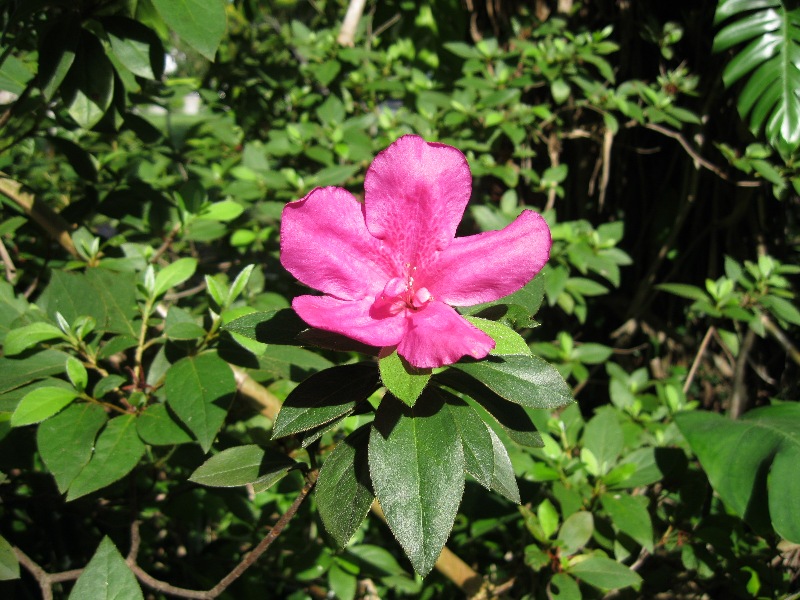
In addition, a few of our night-blooming cereus (Hylocereus undatus) had blooms that were still open at 10 a.m on Tuesday. This is the first and only time this year we’ve noticed them open during the day.
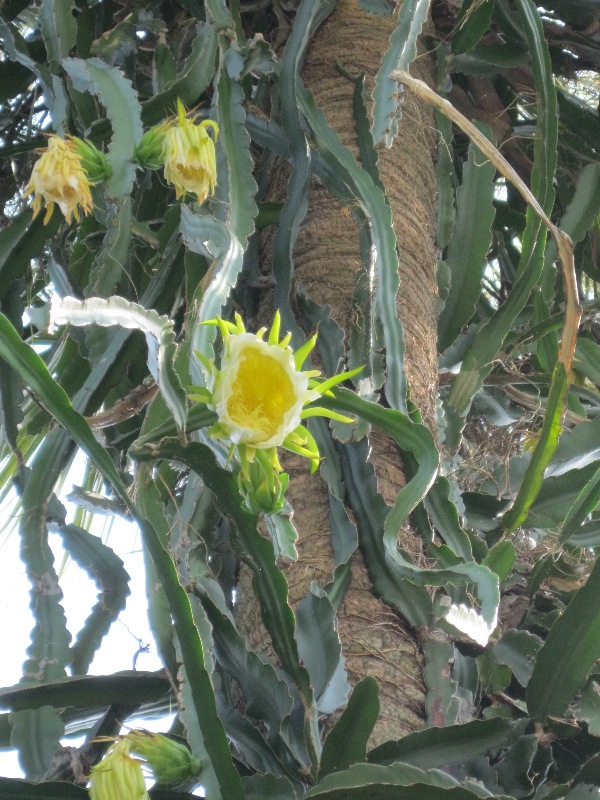
If you would like to view them, the azalea is under an oak in the picnic area near the Banyan Café and the cereus plants are growing on various cabbage palms (Sabal palmetto) within the Ford Estate. We can’t promise that the cereus will be blooming, but you may get lucky if you visit early in the day.
Name That Plant VI: Win That Plant!
The first to correctly identify this plant will win the plant. We will announce the correct answer and the winner next Wednesday!

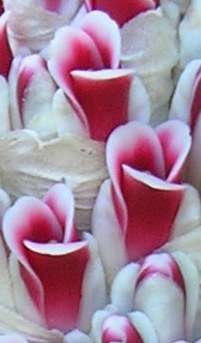
Contest Rules: Leave a comment on Facebook or the Garden Blog with your answer. The person with the first correct answer may choose to receive the mystery plant (if available) or a peace lily. The winner will be announced on the Estates Garden Blog and on Facebook. Plants must be picked up from the Edison and Ford Winter Estates within 7 days of contest end (and, no, we can’t ship them!).
Name That Plant V ANSWER: Coppperleaf
Last week we asked you to identify this plant. Not a single one guessed correctly. The answer is Copperleaf.
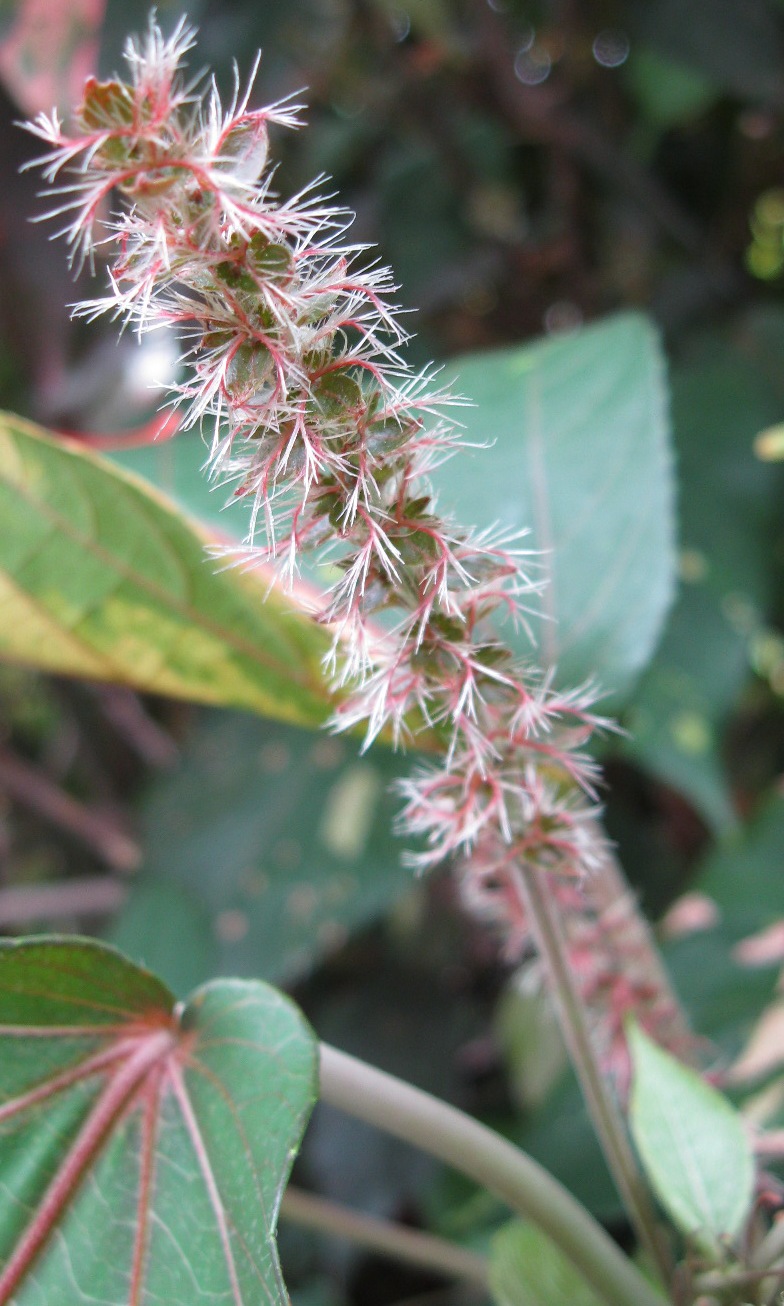
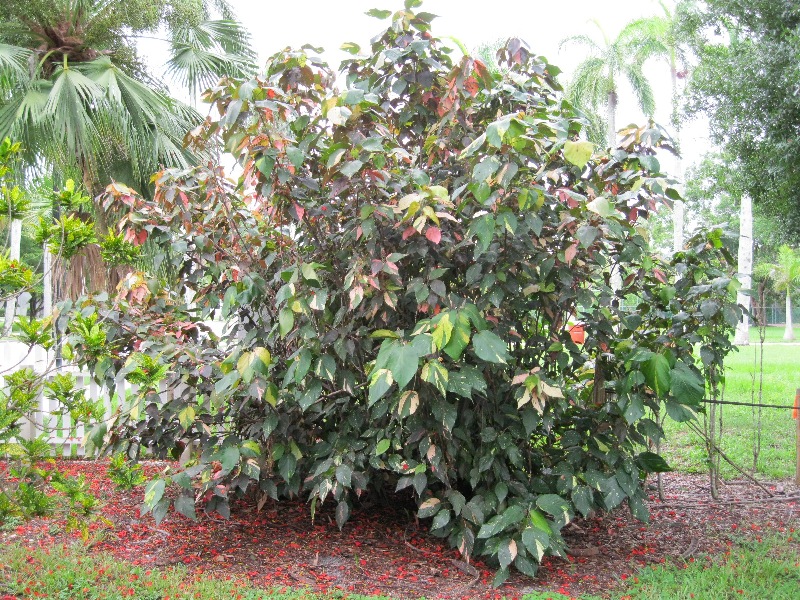
Copperleaf, Acalypha wilkesiana
The multi-colored leaves of this tall accent plant are quite distinct and add a year-round splash of color to the landscape. Reaching 15 feet in height and 8 feet or more in width copperleaf generally requires occasional trimming to keep it in check. Copperleaf plants prefer moist soil but will tolerate short droughts once established. Native to Fiji and the Pacific Islands, it is rated for zones 10-11 but is sometimes grown in colder climates as an annual. Smaller plants can do well indoors, especially in bright light.
A cultivar of this plant, A. wilkesiana ‘Miltoniana’ was purchased for the Edison’s property in 1908 and was recorded as late as 1936, so the Edisons probably enjoyed this plant for many years at their winter home. Today, there are many cultivars of the plant and we sell a few cultivars in the Estates Garden Shoppe.
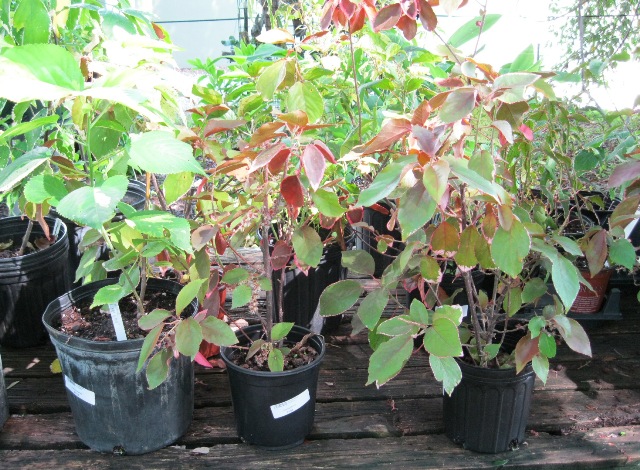
Name That Plant V: Win That Plant
The game continues! Can you identify this plant? We will post the answer next Tuesday!
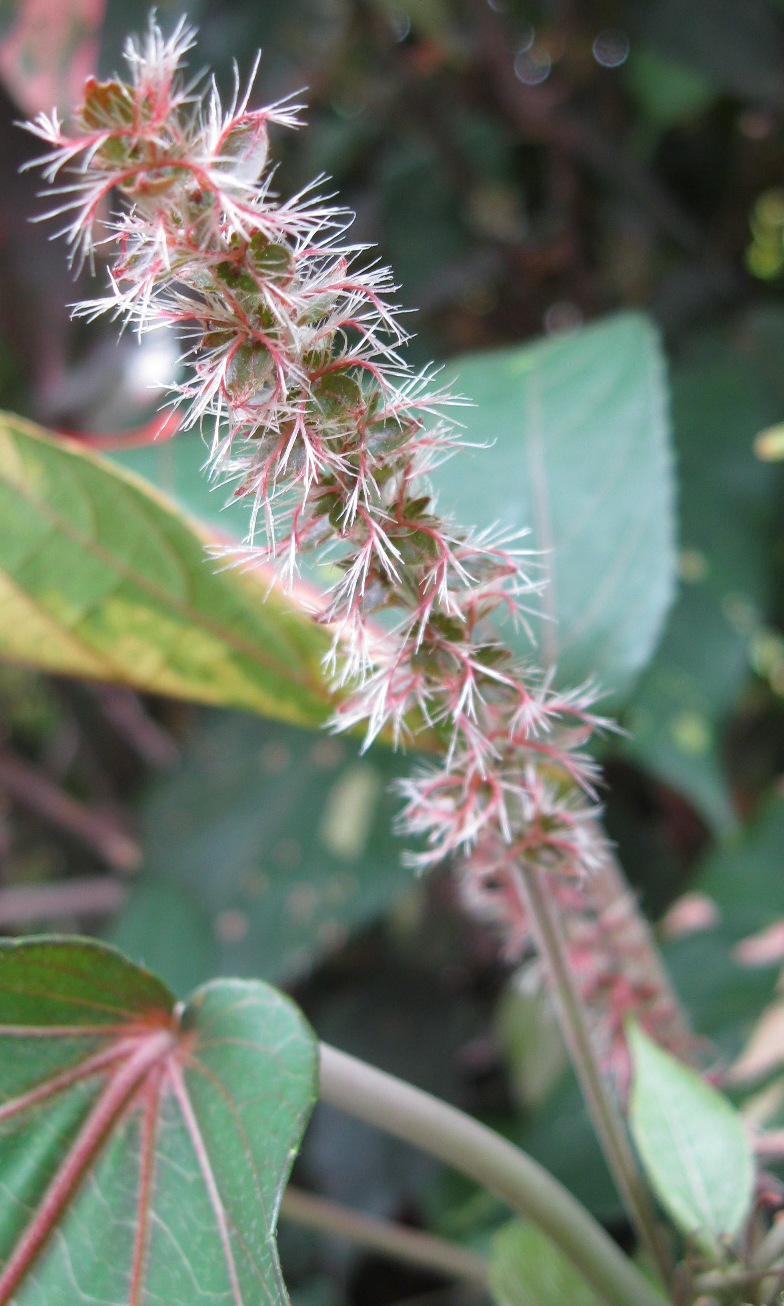
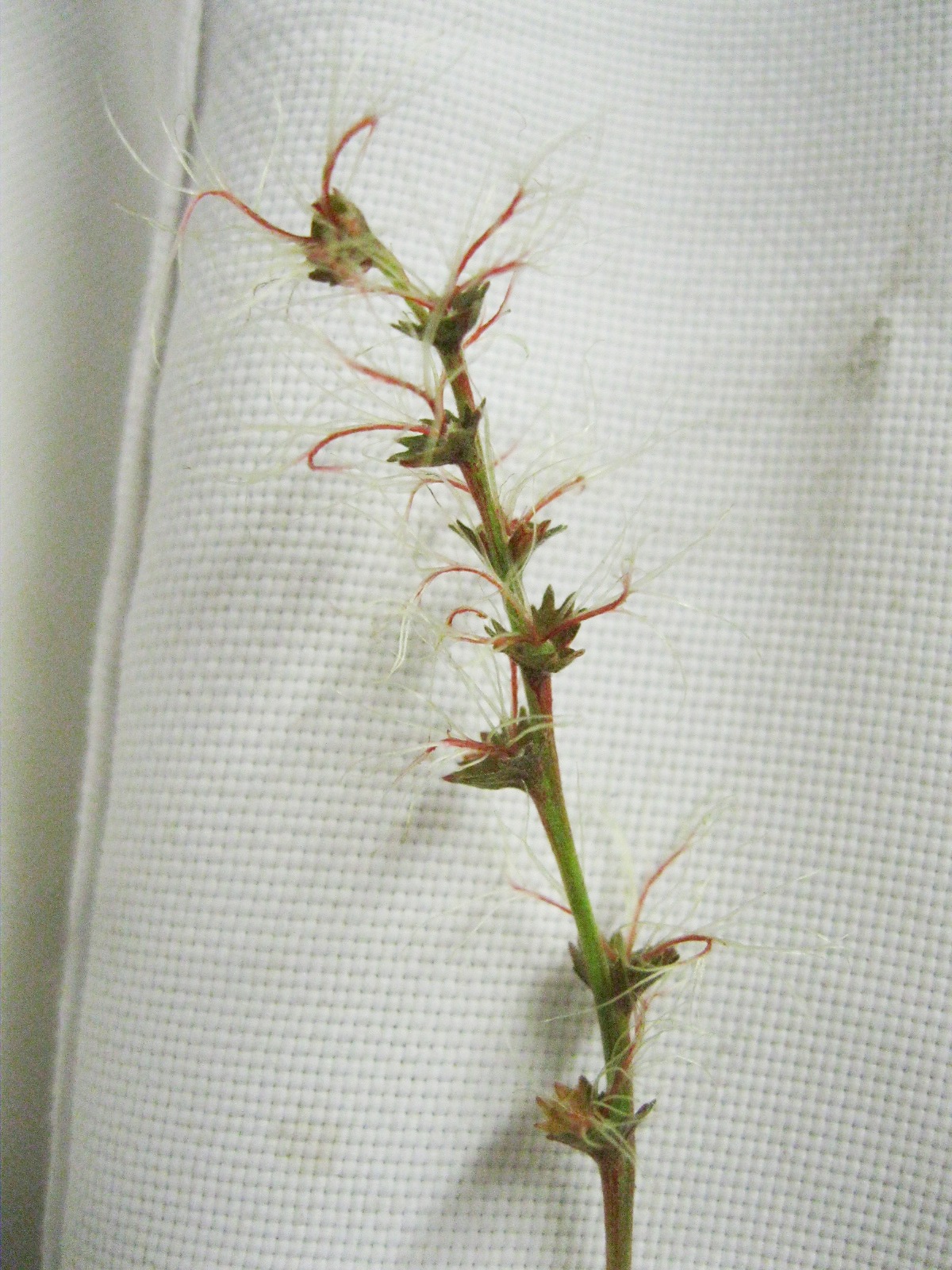
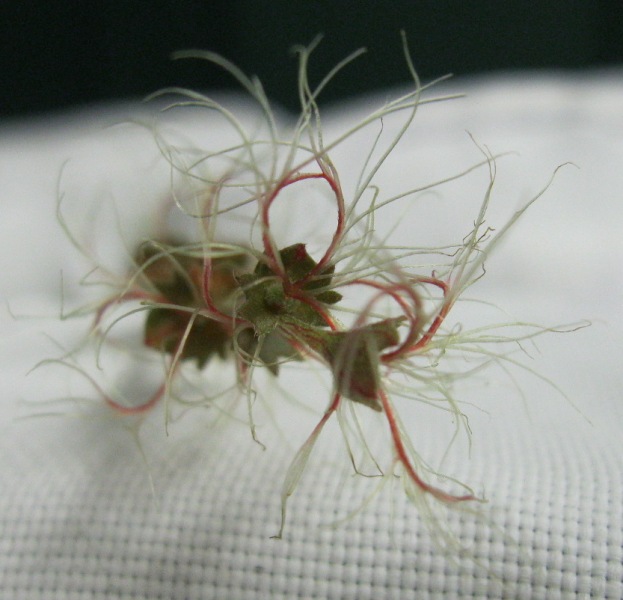
Contest Rules: Leave a comment on Facebook or the Garden Blog with your answer. The person with the first correct answer may choose to receive the mystery plant (if available) or a peace lily. The winner will be announced on the Estates Garden Blog and on Facebook. Plants must be picked up from the Edison and Ford Winter Estates within 7 days of contest end (and, no, we can’t ship them!).